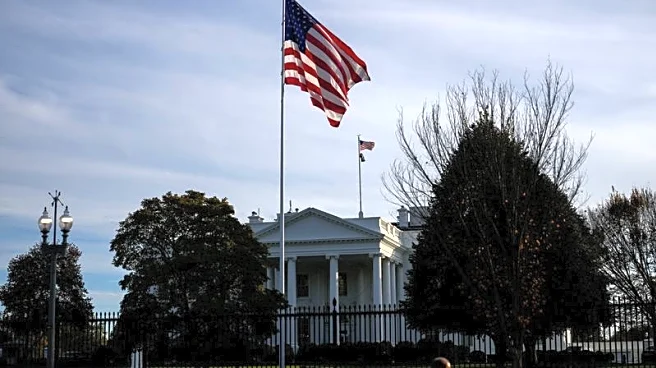What's Happening?
The luxury sector experienced a modest growth in the third quarter of 2025, driven by the stabilization of the US stock market and easing trade tensions. LVMH, a key player in the luxury market, reported
better-than-expected sales, with group sales increasing by 1% to €18.28 billion, leading to a significant share price increase of 12% on October 15. Other luxury brands like Kering and Ferragamo also exceeded consensus expectations, contributing to a strong market rally. Despite these positive developments, the performance in China remains mixed, with some companies like Prada observing a plateau rather than substantial improvement. The US market has been a significant driver of growth, accounting for about 22% of total luxury spending.
Why It's Important?
The modest growth in the luxury sector is significant as it indicates a potential recovery from the sluggish performance earlier in the year. The stabilization in the US stock market and easing trade tensions are crucial factors contributing to this growth. However, the mixed performance in China highlights ongoing uncertainties in one of the world's largest luxury markets. The sector's reliance on the US consumer underscores the importance of maintaining positive economic conditions in the US to sustain growth. The strong performance of major players like LVMH, Kering, and Ferragamo suggests a renewed investor confidence, which could lead to increased investments and expansion in the luxury market.
What's Next?
The luxury sector is expected to continue observing novelties and new product entries in the coming months, as indicated by Prada Group CEO Andrea Guerra. The anticipated growth of brands like Prada and Miu Miu, with expected increases of 5% and 17% respectively in 2026, suggests a competitive market landscape. The sector will likely focus on capitalizing on the US market's strength while navigating the uncertainties in China. Investors and stakeholders will be closely monitoring the developments in China to gauge future demand and market dynamics.
Beyond the Headlines
The luxury sector's performance highlights broader economic implications, including the impact of global trade tensions and stock market fluctuations on consumer spending. The stabilization in the US market reflects a positive economic outlook, which could influence other sectors reliant on consumer confidence. The mixed results in China underscore the complexities of operating in diverse global markets, where geopolitical factors and local economic conditions can significantly affect business outcomes.













